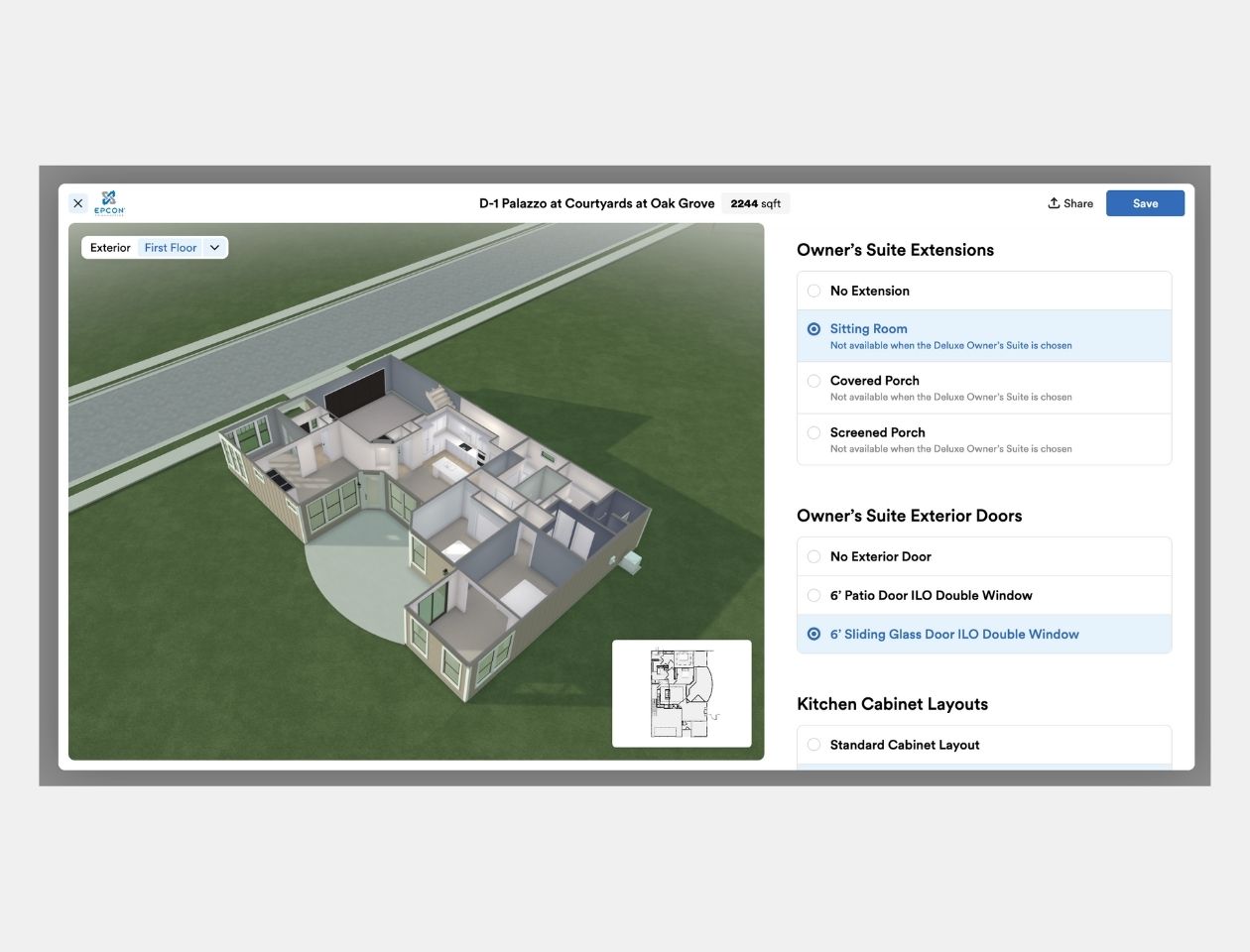Between all the buzz around rising interest rates and low housing inventory, sometimes, it can be tough to recall the untarnished motivation behind the move to buy a home of your own today. Latest trends aside, however, homeownership is still a foundational part of the American Dream. In fact, according to a survey released in March by Bankrate, 74 percent of adult respondents ranked owning a home as the highest standard of societal success, even eclipsing milestones such as having a prosperous career, starting a family, and earning a college degree. But these days, it’s not just buyers who dream of finding their perfect home — it’s builders who dream of having the tools to construct it. The only problem preventing builders from living out that dream? A siloed homebuilding process that’s been “solved” through highly-manual methods, leading to a version-control crisis that weighs builders down with too many spreadsheets shared across too many teams. At Higharc, we give builders access to a centralized mission-control system, making it possible for teams to unlock the same data in real time and eradicate avoidable errors along the way. By completely replacing the need for manual drawings, we translate housing concepts into digital blueprints, empowering builders to generate everything they need to build and sell homes at the press of a button.
For a look inside the system that’s changing the homebuilding (and buying) game, we sat down with Marcus Gonzalez, our Builder Partnerships Lead, to learn how Higharc technology helps builders get back to doing what they love — while leaving the hassle behind.
A Higharc leader well-versed in the world of construction, Marcus believes in the power of an intuitive, end-to-end system that facilitates winning outcomes from a project’s very inception. Fittingly, one of the most impactful ways Higharc provides more value for builders, he argues, is through the cohesion, responsiveness, and transparency of the buyer experience. With Higharc, plans can be edited on the fly, and new construction docs or home renderings will automatically be generated any time a change is made. Because of this, Marcus starts, “A buyer consulting with a sales agent will see the options they’re selecting appear before their eyes, meaning we can appropriately build houses to meet evolving expectations.” In many cases, this cloud-based, always up-to-date software exposes a buyer to their future home before they even step foot into the sales office, proactively arming them with actionable insights that set everyone up for success.
Throughout his dynamic career in the industry, Marcus has engaged in countless meetings where he’s seen buyers express confusion over discrepancies between the original plans presented to them versus the finished product they walked into. “If a buyer only sees the house in right swing, but is greeted with a left swing home upon moving in, they may feel disoriented and even misled,” he elaborates. According to Marcus, ensuring builders and buyers are on the same page up front can prevent headaches like this down the line, therefore saving money and time that teams don’t have to spend fixing costly mistakes or navigating misunderstandings. And then there’s the win-win reality that arming all parties with the complete picture from day 1 means both a better-built home and a happier buyer — ultimately generating superior feedback for the builder who made it all possible.
By designing a system that’s streamlined and responsive, Higharc has set its sights not only on simplifying the everyday homebuilding process, but on revolutionizing the construction industry as a whole. In America today, we build upwards of almost one million new homes every year, yet we waste around $20,000 per home on inefficiencies and errors. That’s 18 billion dollars of waste in unnecessary processes and errors alone — waste Higharc intends to eliminate one builder (and buyer) at a time.
Another way Higharc is shaking up the business of homebuilding? By automating solutions to daily tasks that were once highly manual and excessively time-consuming. “Before Higharc,” Marcus continues, “construction managers would need to spend a good 45 minutes to an hour flipping through pages upon pages of existing architectural plans to cross out the pieces which didn’t apply to a specific project.” And now? “If you have a single neighborhood that has a radically different framing detail than the others in its collection, you can effortlessly adapt the plan to that one neighborhood — and the detail in question won’t be reflected anywhere else.”
In a day and age when perhaps the only thing we can count on is the inevitably of change itself, Higharc empowers builders not just to keep up with changing times — but to stay one step ahead. To prove this point, Marcus relayed the story of a builder that, in anticipation of a continued surge in the price of materials, decided to pivot to a build-to-rent model. “Higharc gave this builder the flexibility to realign a transformer set of plans so they could build 4 different homes off of 1 foundation, all in a short amount of time and with minimal hassle or disruption,” Marcus recounts.
Although the construction industry has been largely untouched by innovation to date, Marcus isn’t surprised to see the Higharc approach resonate with builders first-hand. “There’s always some reluctance to adapt,” he reasons, “but the builders in tune with the problems their teams are facing know it’s time to evolve.” And at the end of the day, Higharc doesn’t seek to disrupt the meaning of the work builders do — only the outdated methods driving it. In expressing his passion for the purpose that connects builders across the world, Marcus explains that “Every team is building someone’s dream home — whether it’s a starter townhouse or a custom-built mansion. There’s mission in that,” he adds. Higharc’s job? To make it simpler for every builder to find theirs.
See higharc in action
Discover how Higharc can empower your team to conquer change, modernize your buyer experience, and decrease cycle times.
Book a demo


.png)




.png)



.jpg)








%20(1260%20x%20960%20px).jpg)
%20(1260%20x%20960%20px).jpg)

.jpg)

.jpg)


















